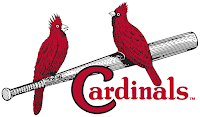Stanley Raymond Harris
Washington Senators
Manager
Born: November 8, 1896, Port Jervis, NY
Major League Teams: Washington Senators 1919-1928; Detroit Tigers 1929, 1931
World Series Appearances: Washington Senators 1924-1925; New York Yankees 1947
As a Manager: Washington Senators 1924-1928; Detroit Tigers 1929-1933; Boston Red Sox 1934; Washington Senators 1935-1942; Philadelphia Phillies 1943; New York Yankees 1947-1948; Washington Senators 1950-1954; Detroit Tigers 1955-1956
Died: November 8, 1977, Bethesda, MD (81)
Hall of Fame Induction: 1975
Bucky Harris had a decent career as a second baseman for the Senators and Tigers between 1919 and 1931, with his biggest claim to fame being he led the league in being hit by a pitch for three seasons in a row between 1920 and 1922. As a player, he batted .274 in 12 seasons and also led the league three time in sacrifice bunts. Harris led all second baseman in fielding percentage with a .972 mark in 1927, and his 817 doubles plays turned at the position are currently 61st all-time. In 1924, at the age of 27, he was named player-manager of the Senators and he led his team to a World Championship title, defeating the Giants in the seven game series. It was the first and only World Series win in Washington Senators history and Harris became the youngest manager to ever win a title. Harris would manage in the majors for 29 seasons, winning three pennants and two World Series titles - with the Senators in 1924, and the Yankees in 1947. Harris, who managed the Senators in three different stints once commented, "Only Franklin D. Roosevelt had more terms in Washington than I did."
Harris would later briefly serve as general manager for the Red Sox (1959-1960, a scout for the White Sox (1961-1962) and a special assistant for the expansion Senators, before their move to Arlington, Texas. He'd spend over 55 years in professional baseball and was inducted into the Hall of Fame by the Veterans Committee in 1975.
January 28, 2023 from Los Angeles, CA (Greg Morris Cards) - Card #70
I somewhat surprisingly won this card from Greg Morris Cards and his latest Diamond Stars set break auctions on eBay. I say surprisingly because I thought for sure the final bid I entered for the card would be surpassed, but it was not. What also surprised me was I had bid on several other cards from the same set of auctions with fairly high final bids, and I ended up losing all those auctions. I expected to add two or three non-Hall of Fame "commons" from the set, and instead I ended up with this Harris card from the somewhat harder to find third series.
The card arrived during a stressful day in our household. Our youngest son Ben was preparing for his piano recital later that day where he was set to play "Feed the Birds" in front of his extended family and 100 or so strangers. Pregame nerves were high and his Mom and me rolled out the best pep talks we could muster. I noticed the arrival of this card during one of these many pep talks, and I didn't bother to open the envelope until the following morning still glowing from the amazing performance Ben had delivered during his recital the night before. He nailed it, and we're incredibly proud of him. Harris seems to be respectfully showing his approval on this card.
Variations Available
1 - 1936 / blue back / 1935 statistics / 1936 copyright
The Card / Senators Team Set
This card polishes off the Senators team set for me, the first team set I've completed in within the Diamond Stars set. The back of the card refers to his status as the "boy manager" of the 1924 Senators. Michey Cochrane (#9), who replaced Harris in Detroit is referenced, as is Joe Cronin (#123). Cronin and Harris swapped places for the 1935 season. Harris had managed in Boston in 1934 and came back to Washington in 1935. Cronin had managed the Senators in 1934 and took over for the Red Sox in 1935.
1936 Season
Harris was just 39 during the 1936 season, and his Senators team went 82-71 for a third place finish in the American League. Outfielder John Stone had a career year, batting .341 with 15 home runs and 90 RBIs. First baseman Joe Kugel batted .321 and surpassed Stone's power numbers with 16 home runs and 118 RBIs. Bobo Newsom (#148) and Jimmie DeShong won 17 and 18 games respectively, with Newsom throwing 24 complete games.
Harris had a brief stint as Phillies manager between April and July 1943. Hired to replace Hans Lobert, whose Phillies team had lost 109 games in 1942, Harris guided the team to a 39-53-2 record and was abruptly fired by new Phillies owner William D. Cox on July 27th. Harris had been popular with the Phillies team, and his players apparently threatened to strike when they heard the news. The reason for the firing was attributed to the clashing between owner Cox and manager Harris, with Cox continually interfering with the day-to-day running of the club.
Following the firing, Harris informed the media he had evidence Cox was betting on baseball. Commissioner of Baseball Kenesaw Mountain Landis (#153) would ban Cox for life from the game, forcing him to sell the club. In November 1943, R.R.M Carpenter bought the Phillies from Cox, and the Carpenter family would retain ownership until 1981.
|
|
|
|
|
Other Notable Baseball Cards
First Mainstream Card: 1921-23 National Caramel (E220)
Topps Flagship Set Appearances (0): N/A
Most Recent Mainstream Card: 2003 Topps Gallery Hall of Fame #38
105 - Harris non-parallel baseball cards in the Beckett online database as of 1/29/23.
Sources:
Previous Card: #90 Ray Hayworth - Detroit Tigers
Next Card: #92 Ethan Allen - Philadelphia Phillies


.jpg)



%20Harris.png)
%20Harris.png)




.jpg)




%20Dean.png)




.jpg)


%20Harder.png)

%20%23134%20Harder.png)



.jpg)




%20Bottomley.png)




%20%2380%20Hornsby.png)

%20Hornsby.png)

%20Hornsby.png)


.jpg)


